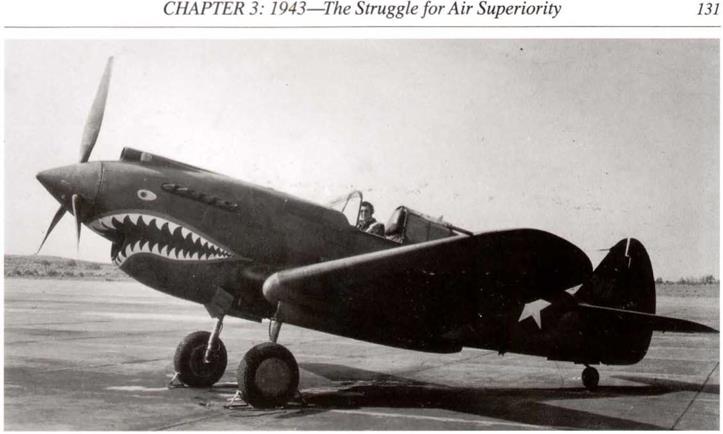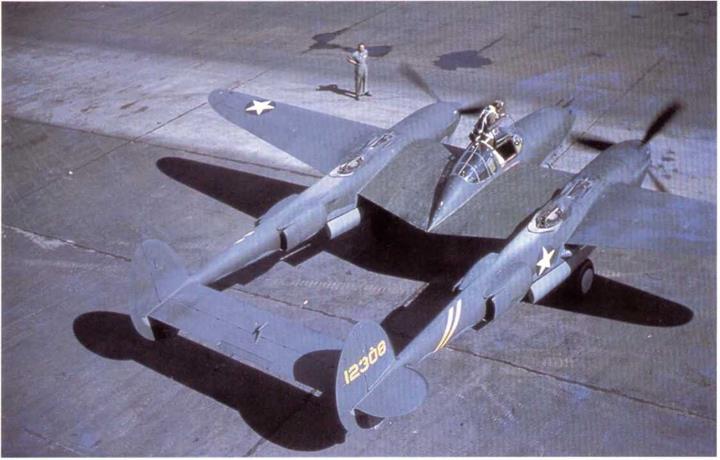Mat. Com. (WF) doubts the advantage of using clear varnish, April 30,1943
In reply to the Eglin Field suggestion on March 16,1943, that a clear varnish could be used as a substitute for the neutral gray camouflage, Mat. Com. (WF) on April 30,1943, stated that the practical considerations outweighed the theoretical advantages. It might be possible to save weight using such a varnish, but there was a tendency in painting to apply heavier coats of clear finishes than colored ones. Actual production figures on paint usage indicated that the possible weight reduction was extremely small.
|
North American P-51A-1-NA, 43-6016, the 14th one built at El Segundu in 1943. North Ameriean was the only company to put the radio call number on the fuselage of a pursuit, such as the P-51 A. Though allowed by the spec., it was rarely done, and w as probably due to the small size of the vertical tail on the P-51A. (USAF) |
|
|
Curtiss P-40-CU, 39-174, was the 18th P-40 built, and had managed to survive until April 10, 1943, most recently in the training role. It still has the “U. S. ARMY” under the wings, despite this being deleted from all aircraft in October 1942. (CSAF)
|
|
Lockheed P-38F-LO, 41-2308, is seen in dark olive drab and neutral gray finish which appears to have been overpainted with haze paint on the upper surfaces. However, it is fully armed and carries two rear-sloping yellow command bands on the rear booms. (USAF via Gerry R. Markgraf)
|
Boeing XC-105,35-277, seen in Panama, Canal Zone, in 1943. Originally built as the XB-15, it was converted for transport use in early 1943. The insignia on the nose shows an elephant carrying a large trunk on its back. (USAF) |
If both clear and camouflaged surfaces were smooth, Mat. Com. doubted that there would be any advantage of the clear finish over the camouflage paint. Mat. Com. also doubted that the clear finish would provide the same protection against corrosion that provided by zinc chromate primer, and the drying time of the clear varnish was longer than that of the presently used camouflage finishes. Due to these and other reasons (unstated), Mat. Com. recommended that the use of clear varnish should be reconsidered.














